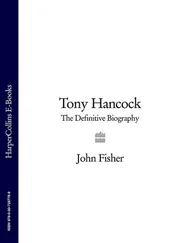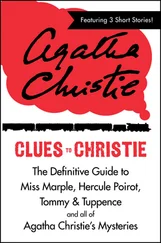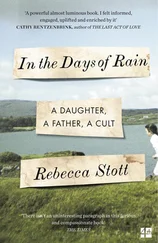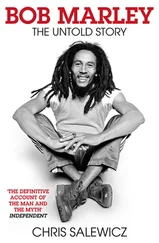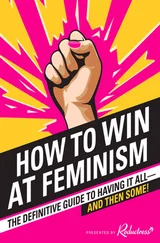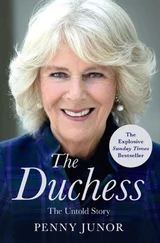Quickly forgiven, Beck was admitted back into the Yardbirds fold. This was a necessity, as they were about to join the winter leg of Dick Clark’s Caravan of Stars – a regular feature of the American popular music calendar organised by the legendary DJ. But before that there was another avenue to explore.
An exaggerated, dramatised version of the high-end hippiedom found at Anita Pallenberg and Brian Jones’s home was expressed in the party scene in the classic – yet occasionally extremely pretentious – metaphysical thriller Blow-Up , which Italian director Michelangelo Antonioni started filming in London in April 1966. (The scene was actually shot in Christopher Gibbs’s Cheyne Walk house.) In the film a fashion photographer, played by David Hemmings and clearly based on enfant terrible David Bailey, thinks he has witnessed a murder.
After completing the London shoot in June, Antonioni decided that to fully represent the capital’s glamorous, swinging spirit he should shoot a sequence in a rock ’n’ roll club. In September he returned to London and booked a meeting with Kit Lambert, manager of the Who. The day before the meeting, Lambert had lunch with Napier-Bell at the Beachcomber restaurant in London’s Mayfair Hotel; the two men were close friends and Lambert wanted to pick Napier-Bell’s brain about how to approach Antonioni. Napier-Bell decided to set him up to the advantage of his own group: ‘I told him to ask for £10,000 and insist that the Who had final edit on their sequence. Antonioni kicked him out after about a minute.
‘Then I went to see Antonioni: “We don’t want money. This is art. Of course I don’t want to edit it.”’ (In fact the Yardbirds received £3,000 for their part in Blow-Up : car-freak Jeff Beck immediately spent his share on a second-hand Corvette Stingray.)
Napier-Bell had scored. The Yardbirds’ Blow-Up sequence was filmed at Elstree Studios in Borehamwood, north of London, doubling for Windsor’s hip Ricky-Tick Club, in the week beginning 6 October 1966. The band played ‘Stroll On’, as it was called in the film’s credits, the lyrics having been rewritten the previous night by Keith Relf for copyright reasons – in other words, so he could snatch the credit. But it was better known by fans who had experienced the song when rivetingly performed by the Johnny Burnette Trio as ‘Train Kept A-Rollin’’ – the same song that the Yardbirds had recorded at Sun Studio in Memphis the previous year. (Howlin’ Wolf’s ‘Smokestack Lighting’, a Yardbirds live favourite, had been first choice, but the idea was shelved when Antonioni decided it lacked the relentless pace he needed for the scene.)
‘Train Kept A-Rollin’ would be the very first number that Led Zeppelin would play in their initial rehearsal; in Blow-Up the Yardbirds essay an angry, explosive version of the song before a consciously static audience, which includes a young Michael Palin and a dancing, silver-coated Janet Street-Porter. Page stands stage-right to Beck’s stage-left and, rather in the manner of the Kinks’ Dave Davies, his hair is parted in the centre, his mutton-chop sideburns kissing his jawline and peeking out beneath the twin tonsorial curtains waterfalling from his head. He wears an open black jacket, a trio of badges balanced symmetrically on each lapel. In the sequence Beck freaks out over a malfunctioning amp, smashing his guitar to splintered pieces in a manner that only Pete Townshend would actually do in reality. Upon learning of his role, Beck had recoiled: would he have to destroy his new Gibson Les Paul? No fuckin’ way!
A bunch of cheap Höfner replica guitars were brought in. ‘Jeff Beck had to be coaxed into smashing the guitar. And then he did it half a dozen times,’ recalled Napier-Bell. It is only after the guitar has been destroyed that the audience breaks out into a feverish response.
Smashing the guitar wasn’t the only problem Beck had on the film, however. ‘Antonioni was a pompous oaf. I didn’t like him at all,’ he said. ‘The film was a bit of a joke. Crap. I thought, “Oh, that’s the end of us.” Because I saw the premiere in LA. But people loved it. It kept us going.’
This scene from Blow-Up appears to be the only filmed record of Page and Beck playing together in the Yardbirds. Though he is only briefly glimpsed in this scene, and Beck’s thuggish fury unquestionably steals their joint screen time, Page’s almost girlishly pretty looks – which crease momentarily into a smile – contrast powerfully with Beck’s pugnacious posture, like that of a yob awaiting his borstal sentence. You can see why, for the brief time they played together, the pair proved such a potent force in the Yardbirds.
Along with the Yardbirds on the Dick Clark Caravan of Stars tour were bill-toppers Gary Lewis & the Playboys, whose singer was the son of comedian Jerry Lewis. The group – safe in a Herman’s Hermits/Gerry and the Pacemakers kind of way – had seven successive US Top 10 singles. Then there were ‘Wooly Bully’ hitmakers Sam the Sham and the Pharaohs; the Distant Cousins; Bobby Hebb, high in the US charts that summer with his sophisticated, sexy ‘Sunny’; and early sixties vocal star Brian Hyland, purveyor of puppy-love pop. Soon, as album rock became the principal market force, several of those acts would see their careers nosedive forever.
The tour wound through the south, the Midwest and East Coast before winding up in Huntington, West Virginia, on 27 November. ‘Thirty-three dates, I think, and of those twenty-five were doubles, two shows in one night,’ said Page. ‘You’d think a double would be played in the same town, but it wasn’t – it was two different towns. The show was in two halves. When the first half finished, and there was an interval … the performers would get on the coach driving to the next venue, while the second half carried on. Then, they in turn carried on to the next place, where the others had by then finished. It was the worst tour I’d ever been on, as far as fatigue is concerned. We didn’t know where we were or what we were doing.’
Travelling conditions were abysmal, the artists being driven 600 miles or so a day in a pair of converted Greyhound buses to play four songs each at every show. ‘The other acts had little or nothing in common with us,’ said Jim McCarty. ‘Sam the Sham and his Pharoahs, Brian Hyland. I mean, they were just so different, though Sam the Sham had his moments. Anyway, when they let us off the bus, we’d go onstage and they’d shout, “Turn the guitars down!” Jimmy was getting through it because he was a professional. Chris and I stood up to it because we were creating humour from all sorts. Keith was drinking his way along. But Jeff …’
Jeff Beck was becoming a specialist in crossing the United States in a bad mood: ‘The bus was supposed to have air-conditioning, but didn’t seem to. And all the American groups on the bus played their guitars non-stop, and were always singing. Could you imagine? Cooped up on a stuffy bus with everyone around you singing Beatles songs in an American accent?’
His technique honed on the set of Blow-Up , Beck cut a destructive swathe through the tour’s initial dates: amps thrown out of windows, instruments smashed. ‘Jeff Beck had to be coaxed into smashing his guitar for the Blow-Up scene,’ said Napier-Bell. ‘And then he fell in love with doing it and with smashing his amp. I’m sure Jimmy Page was counting the nights, because then Jeff Beck left.’
The frustration within the group began to mount, and, as Beck would admit in hindsight: ‘I was quite messed up. At 21 I was really on my last legs. I just couldn’t handle it.’
‘One time in the dressing room,’ recalled Page, ‘Beck had his guitar up over his head, about to bring it down on Keith Relf, but instead smashed it to the floor. Relf looked at him with total astonishment, and Beck said, “Why did you make me do that?”’
Читать дальше



